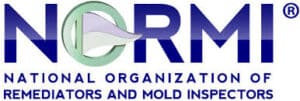Pocono Crawlspaces – Common Issues & Advice
Every day that I wake up and head out to inspect someone’s home that has a crawlspace, I could probably fill some of my inspection forms ahead of time. It is an unfortunate fact is that many crawlspaces in the Pocono Mountains have moisture problems. As we all know, there are plenty of horror stories out there about crawlspaces & moisture problems so why don’t we talk about the cause and cure of these problems

There are two different types of crawlspace setups, vented and non-vented.
Vented:There are vents that provide adequate cross ventilation, the sub floor of the home is insulated along with the pipes in the crawlspace to prevent freezing, there is a vapor barrier on the ground and the vents get closed in the winter time. A small heater or heat tape is used help keep the pipes from freezing in addition to the insulation on the pipes.
Non-vented: The crawlspace foundation walls are insulated, the sub-floor is not. The vents are blocked off with insulation all year long, a vapor barrier is in place on the crawlspace ground and the air is conditioned with a dehumidifier. A small heater and pipe insulation are still recommended.
Causes & Cures:
1) No rain gutters. Although controversial, we all need gutters to keep the rainwater away from our homes. The average roof sheds 1,000 gallons of water during 1 inch of rain. This water will fall along the foundation and find the crawlspace very quickly. The best rain gutter covers are solid and cover the gutter opening, allowing water to come in by curling under the cap via gravity. Mesh and screen covers just get clogged up or collapse.
2) Downspouts terminate along foundation.The downspouts need to shed water away from the home at least 6 feet or more or to underground pipes that lead away from the home.
3) Terrain slopes toward foundation. Make sure that the landscaping does not do this. All surface water should be directed away from the home. A swale may be necessary if your home is built on a slope. The foundation can have significant structural damage caused by water along the foundation that freezes in the winter collapsing the foundation inward.
4) Inadequate ventilation. Don’t forget to open those vents that you closed for the winter. A crawlspace needs a minimum of 1 square foot of ventilation for every 150 square feet of crawlspace floor area and should be within 3 feet of the corners allowing for cross ventilation. Low decks, other types of construction above or against vents along with shrubs can block the vents making them useless. Your home needs to breathe.
5) Insulation installed upside down. Depending on how you have your crawlspace set up, either vented or non-vented, you may have insulation in the flooring. The paper side of the fiberglass insulation should always face the heated living space and sit against the sub flooring. When it faces downward towards the earth, it has a tendency to trap moisture between the sub floor and the paper hiding moisture damage. If your crawlspace is set up properly as a non-vented crawlspace, no insulation is necessary in your floor.
6) Damaged or loose vapor barrier.You should have a 6-mil thick poly vapor barrier on the ground of your crawlspace, overlapped and sealed around columns and the walls. This will help to keep the ground moisture vapors from rising up into your framing. Most homeowners will add gravel on the top for protection.
7) No or non-functioning sump pump. If you have a sump pump installed, make sure it is at the lowest point in the crawlspace and all area easily drain to it. The pump should be inspected regularly and function automatically. If you get standing water in your crawlspace even with items 1 through 6 in place, you need a sump pump. Nothing can take the place of a properly installed perimeter foundation drainage system by the builder but a sump pump is the next best thing. The pump should be in a plastic cylinder in the ground and eject water outside, away from the building and not into the septic or sewer system.
8)A non-vented crawlspace with no dehumidifier. If you are going to set up your crawlspace as non-vented, you must condition the air with a dehumidifier and have the water collected piped to the sump pump or install a condensate pump. If you don’t pipe it to drain automatically, you will be emptying the collection device daily. Buy a quality dehumidifier with an adjustable, automatic setting so it does not run all of the time.
Please remember that a crawlspace is an integral part of your home and should be kept neat, clean and easily accessible. Inspect it often looking for signs of moisture or mildew and consult the local code official for any repairs. Remember the old saying “An ounce of prevention is worth a pound of cure”.
From experience, my personal preference is the non-vented crawlspace. Talk with your home improvement specialist or builder to see what is best for your situation. All systems should be professionally installed and inspected by local code enforcement.
Source: Poconos Real Estate
Please contact Aspen Environmental Services for mold testing and removal at (978) 681-5023. Or email [email protected].
Aspen professionals are licensed and insured and members of the National Organization of Remediators and Mold Inspectors (NORMI) and the National Air Duct Cleaners Association (NADCA).


